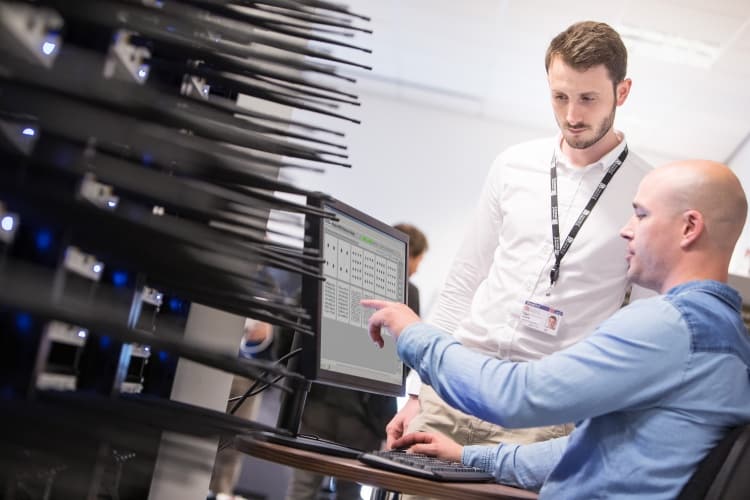
In April, the pair delivered an aggregate data rate of 1.59Gbps, setting a new world record in wireless spectrum efficiency of 79.4bit/s/Hz. It was achieved using Massive MIMO (Multiple Input and Multiple Output), where large numbers of antennae provide simultaneous connectivity to multiple users in the same radio channel through a technique known as spatial multiplexing.
The pair initially used a 128-antenna Massive MIMO testbed to demonstrate how 12 users could be simultaneously connected using a single 20MHz channel at 3.5GHz. Then in May, they broke their own record by supporting 22 simultaneous users to achieve an efficiency of 145.6 bit/s/Hz.
“The demands for mobile data are increasing exponentially and operators are struggling to keep up,” said Prof Andrew NIx from Bristol’s faculty of Engineering.
“In the sub 6GHz bands, Massive MIMO is the 5G technology of choice. By breaking the work spectral efficiency record twice, compared to 4G we’ve managed to demonstrate an order of magnitude increase in spectral efficiency.”
Paul and Steffen received widespread praise for their achievements at National Instruments' recent NI Week in Austin, Texas. They picked up five individual awards, including NI’s Engineering Grand Challenges Award, the Hewlett Packard Enterprise (HPE) Edgeline Big Analogue Data Award, and the 2016 Customer Application of the Year Award.
“We’re justifiably proud of Paul and Steffen,” said Mark Beach, Professor of Radio Systems Engineering and manager of Bristol’s EPSRC Centre for Doctoral Training (CDT) in Communications.
“These awards truly exemplify both their technical contributions to the field of Massive MIMO 5G wireless spectral efficiency and our collaborations with European universities and the NI engineering team in the US.”




Project to investigate hybrid approach to titanium manufacturing
What is this a hybrid of? Superplastic forming tends to be performed slowly as otherwise the behaviour is the hot creep that typifies hot...